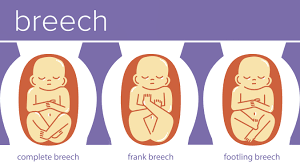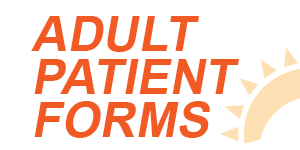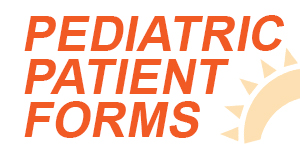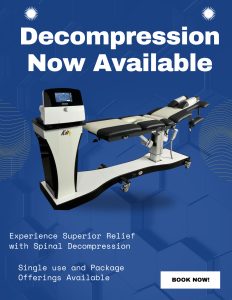Whether you’re on your first or third pregnancy, the new’s of having a breech presentation baby can add unneeded stress to your life. When your baby is breech, it means the baby is upright and has not flipped to go head down in preparation for natural childbirth. Find out why your baby may be breech, what the different kinds of breech there are and how you can help the baby turn safely in time for birth.

Why Does a Baby Present Breech?
As the baby grows inside the womb, it is floating in the amniotic sac and and be facing in any presentation. As they become larger, so does the womb that protects them. If the hips and pelvis are not straight then it will distort the room for the baby and the baby will not have enough room to flip over when the time is needed. The womb itself is shaped like an upside down pyramid and connects at all four corners of the pelvis, so if the pelvis is rotated in any other orientation then so shall the womb. This in turn will prevent the baby from being in the proper position in time come birth. Find out below what you can do to help turn the baby!
Other reasons for why a baby may present in the breech position is that it may be wrapped by the cord or the placenta is in a position preventing the baby from flipping. Regular ultrasounds will ensure the cord has not wrapped around the head or neck but will also make sure it is not in the way when flipping as well. With the placenta, it can be anywhere in the womb depending in where the fertilized embryo attaches to. Sometimes if in a weird spot it may prevent the baby flipping as well.
Different Breech Baby Presentations
There are three ways a baby may present breech when upright. They’re called complete breech, frank breech, and footling breech as seen in the picture to the right. There is a fourth presentation called transverse breech when the baby is completely sideways in the womb as well.
Medical Approach to Turning the Baby
The medical approach to turning the baby is quite aggressive and can be painful or uncomfortable. Usually accompanied by an ultrasound, they will manually attempt to turn the baby manually. This procedure is called External Cephalic Version or EVC for short. The success rate has been seen to be around 58% with this procedure whether they are unable to turn or that the baby will flip back to where it was. This procedure is performed after 37 weeks if the baby still has not flipped.
Chiropractic Approach
According to the International Chiropractic Pediatric Association (ICPA), the Webster Technique can help with a breech baby. This technique is designed to help with neuro bio-mechanical function of SI-joint dysfunction not not specifically for breech babies. It is possible for the baby to flip though that is not what it was designed for initially. Through restoring the function to the SI joint and pelvis, the initial goal is to make sure the baby is developing properly. Through restoring the function of the pelvis, we are reducing stress on the baby and the nervous system so the baby can receive everything it need in order to function and develop correctly.
The Webster Technique has been shown to be effective in allowing the baby to flip at around 82% according to a study conducted in 2002. The most effective time for this procedure to be done is between 32-35 weeks along according to the study.
In Our Office
A recently pregnant patient of mine walked in with a breech baby and placenta was on the anterior (front) wall. This was thought to be the reason for the breech position but after a few adjustments the baby flipped with no problem! Luckily the baby flipped before the ultrasound that was going to determine if she needed the ECV procedure or not and we are happy to help her naturally flip the baby so she can avoid the ECV procedure or worse yet a cesarean birth which has shown to be very traumatic on not only the mother but baby as well.
If you are pregnant with a breech baby, follow the link below to schedule your new patient evaluation and see how we can help!
CLICK HERE TO SCHEDULE YOUR FIRST VISIT!
Yours in Health,
720-381-6139
6208 E Pine Ln, Parker, CO 80138




